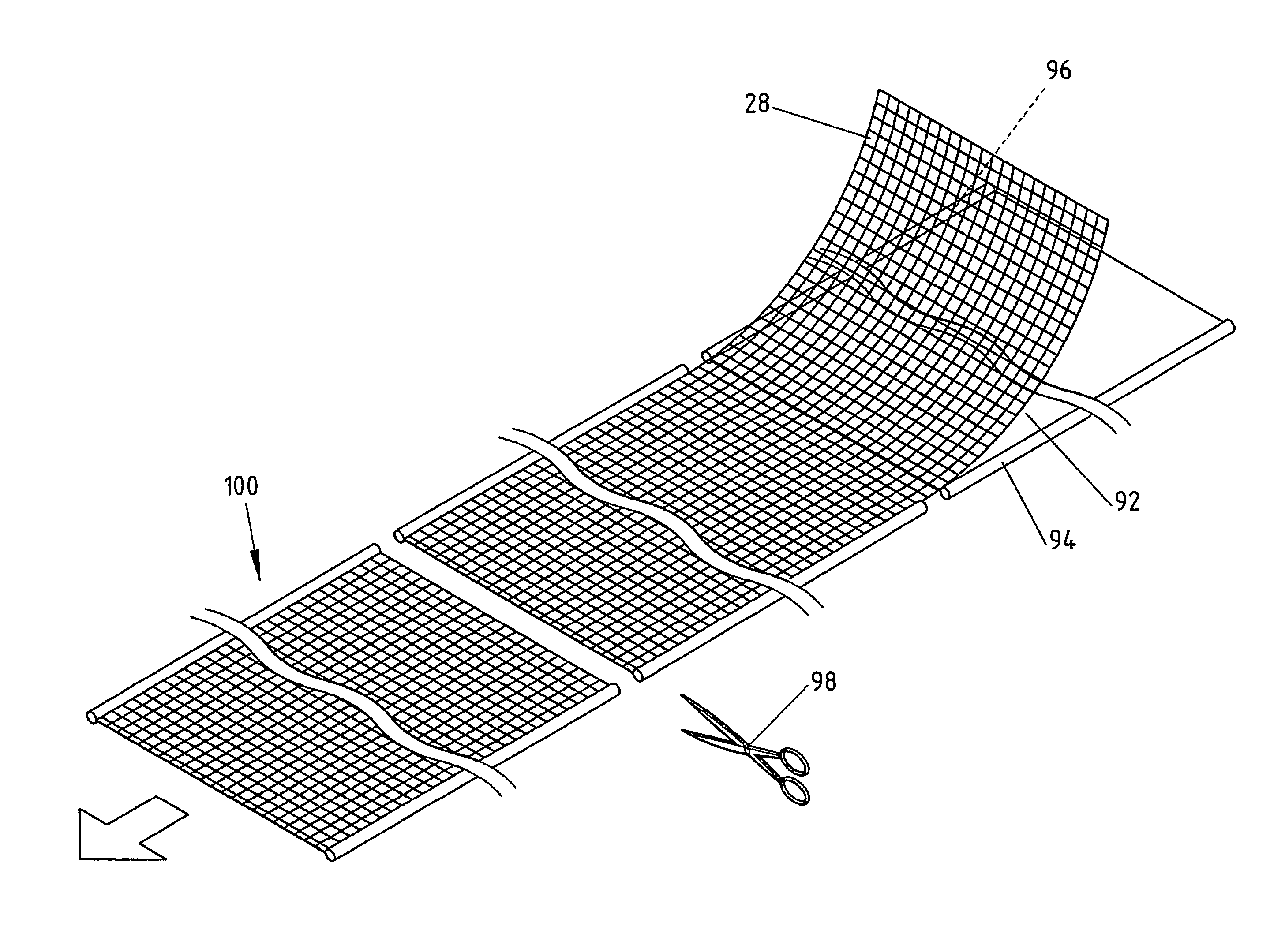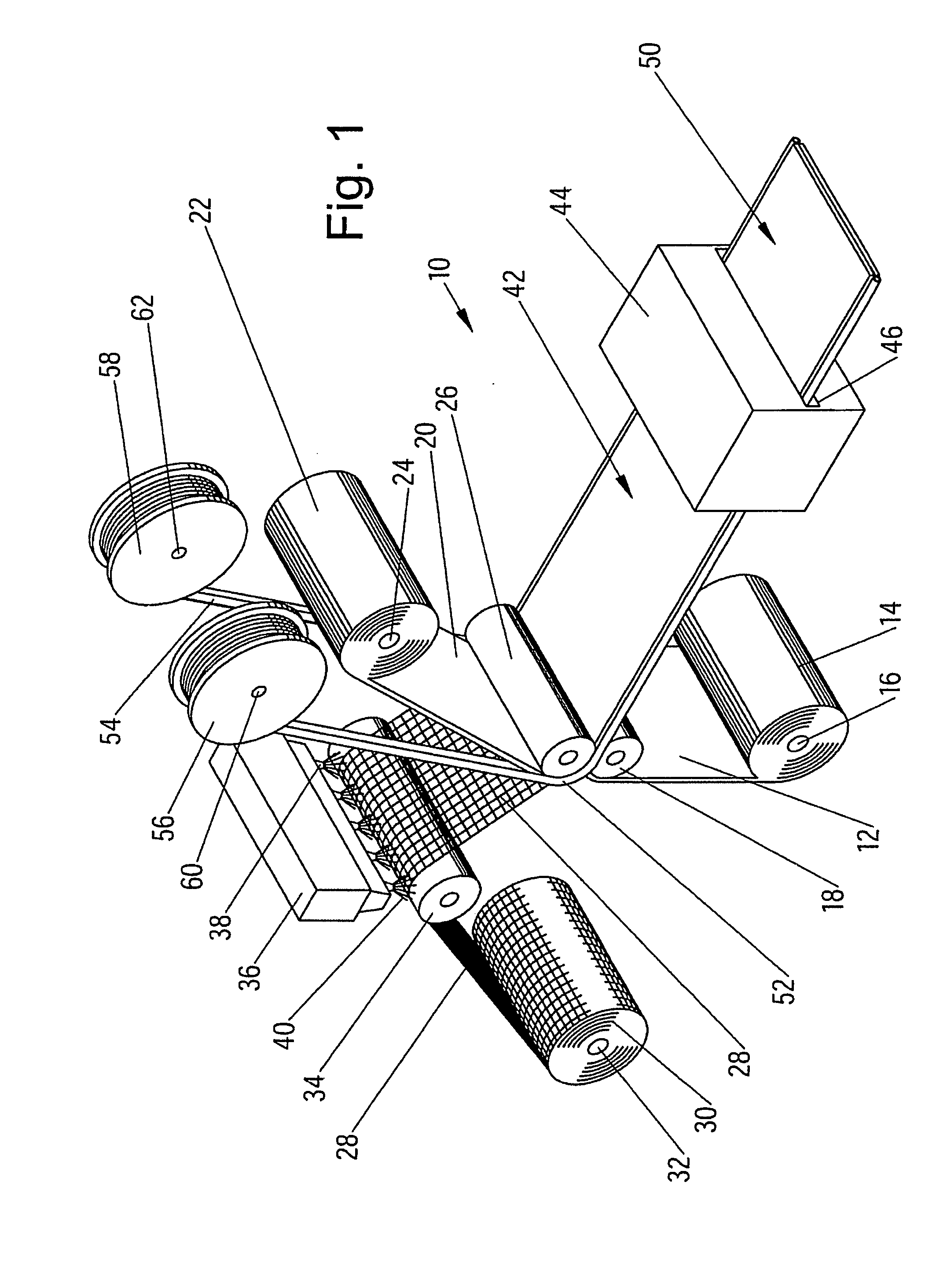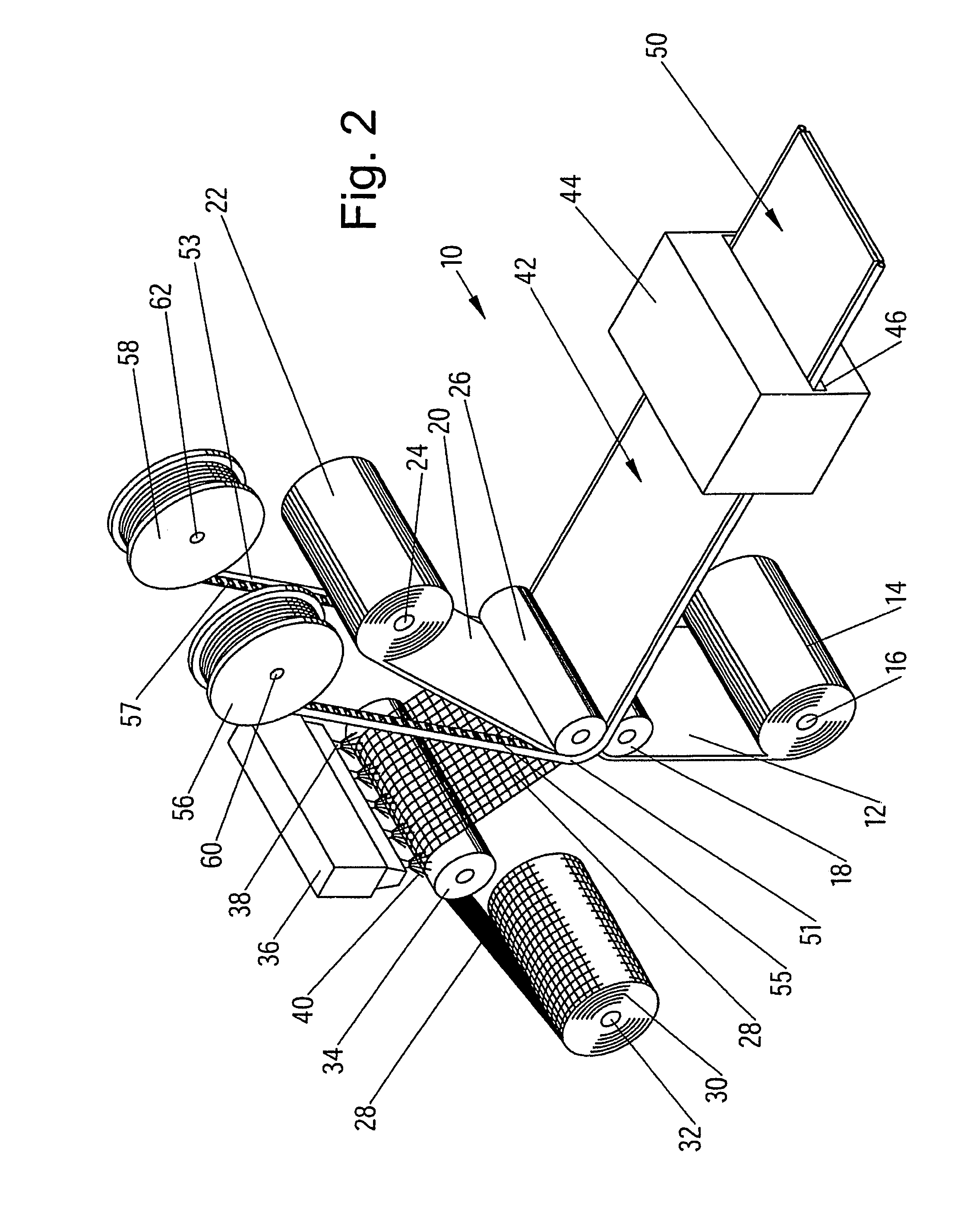Membrane and a method of producing a membrane
a technology of membranes and membranes, applied in the field of membranes and a production method, to achieve the effect of high impact resistance and low frictional properties
- Summary
- Abstract
- Description
- Claims
- Application Information
AI Technical Summary
Benefits of technology
Problems solved by technology
Method used
Image
Examples
example 1
[0136] By means of the process line shown in FIG. 3, a continuous composite membrane was made from the following components: The foil 12 was an 80 μm LDPE foil including flame retardants. The mesh 28 was an 8×8 mm mesh size PET mesh of 1670 dtex multifilament yarn. The top foil or coating layer 25 was a 120 μm LDPE foil including flame retardants. The ‘Keder’ bands 52 and 54 were constituted by 200 mm width HDPE woven bands applied to the top surface of the coating layer or top foil 25. In an additional process step similar to the process illustrated in FIG. 7, the 200 mm HDPE woven bands were turned over and were adhered to the respective band enclosing an 8 mm plasticized PVC ‘Keder’ string. The width of the composite membrane was 2.57 m, and in the alternative variant, the width was 3.0 m.
example 2
[0137] In an alternative embodiment, a pre-fabricated ‘Keder’ web made from woven PE fabric and including a 8.5 mm plasticized PVC string is laminated to the top foil or coating layer 25 in the process illustrated in FIG. 3 while employing the roller 26′ shown in FIG. 17 and the foil 12, the mesh 28 and the top foil or coating layer 25 as specified in Example 1 above.
example 3
[0138] In the process line shown in FIG. 4, the foil 12 is constituted by a 250 μm PE foil including frame retardants, the mesh 28 is the mesh of Example 1 above without lubrication and the top foil or coating layer 25 is a 250 μm PE foil.
[0139] The ‘Keder’ bands 52 and 54 are constituted by woven PE bands of a width of 100 mm having apertures measuring 20×25 mm. Like the above described Example 1, a ‘Keder’ string of plasticized PVC of a diameter of 8.5 mm is used.
[0140] Apart from the below claims, the following points are also relevant in defining the present invention:
[0141] Point 1. The method according to any of the below claims 1-15, said polymer material of said first and / or said second foil being PE, preferably LDPE or MDPE; LLDPE; VLDPE, alternatively termed plastomers; EVA; EBA; EMA; EAA; PP, preferably isotactic polypropylene homopolymer; random copolymers of propylene and ethylene, alternatively termed raco-PP; copolymers of propylene, ethylene and optionally higher ...
PUM
 Login to View More
Login to View More Abstract
Description
Claims
Application Information
 Login to View More
Login to View More - R&D
- Intellectual Property
- Life Sciences
- Materials
- Tech Scout
- Unparalleled Data Quality
- Higher Quality Content
- 60% Fewer Hallucinations
Browse by: Latest US Patents, China's latest patents, Technical Efficacy Thesaurus, Application Domain, Technology Topic, Popular Technical Reports.
© 2025 PatSnap. All rights reserved.Legal|Privacy policy|Modern Slavery Act Transparency Statement|Sitemap|About US| Contact US: help@patsnap.com



